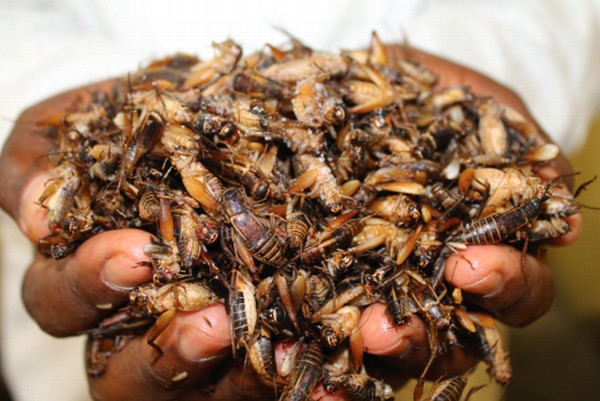Jaramogi Oginga Odinga University is recruiting farmers to rear crickets as an alternative source of food at a time when maize, Kenya’s staple food is recording a decline in production due to Fall Army worm infestation and the lethal necrosis disease.
According to World Bank, Kenya’s population is projected to reach 85m people from the current 47m by 2050. Escalating food insecurity, growing demanding consumers and environmental concerns have thus necessitated the search for alternative protein source to supplement or replace conventional protein sources such as livestock meat.
“Jaramogi Oginga Odinga University is recruiting farmers in an educational program that involves teaching, research, product development and commercialization related to crickets as food and feeds across Kenya and Africa at large,” said John Odero, an agronomist at the university.
“Edible insects such as crickets are resilient to climatic changes and emit considerably less amounts of green gases and they are also available in all seasons,”
Related
Cricket farming for value addition
Eating crickets can end malnutrition in children
JKUAT trains farmers on cricket farming
 A handful of crickets
A handful of crickets
JOUUST has established the Africa Center of Excellence in Sustainable use of Insects as Food and Feeds (INSEFOODS) with funding from the World Bank.
In this, interested farmers will be trained on the whole process of rearing crickets from the start until they mature and afterwards the university will buy the insects from farmers at Sh5,000 per kilogram thereby providing ready market for farmers.
The research center then adds value to crickets by producing products such as biscuits and cricket flour which are then sold to the local markets as well as for exports.
A 50g packet of cricket biscuits for instance retails at Sh200.
According to the Food and Agriculture Organization (FAO), the global food crisis and malnutrition would be solved if poor families have access to inexpensive food items produced at the household level. The environment would also improve through reducing livestock farming and increasing farming of edible insects.
Crickets have a high nutritional value of over 60g/100g dry weight basis, this is higher than that of soybean ( 49 per cent dry weight basis) and beef (36 per cent dry weight basis), which are among the common conventional sources of proteins.
The Materials required in setting up a basic cricket farm
They include two plastic storage containers - 'Rubbermaid' or similar (Breeding containers), three medium sweater boxes (rearing containers), six - 500 ml (one pint) plastic tubs (nesting and food containers), egg 'flats', heat pad (optional) - medical types available at most drug stores work well.
Others are a water dispenser ( small chick waterer sare available at feed shops or specialty pet shops), jar lid, quilt batting or plastic scouring pad and aluminum mosquito screening
The cost to establish a basic system is about Sh3000 inclusive of the initial cost of breeding the colony. To start such a colony at least 200 crickets are required
Crickets mature after three months and a 40ft by 20ft piece of land can accommodate 100 crickets which can earn Sh70,000 in three months meaning farmers can earn up to Sh280,000 per year compared to an average of Sh90,000 on an acre of maize earned in six months.
Interested farmers can call John Odero on +254 713 348 411.
















Comments powered by CComment